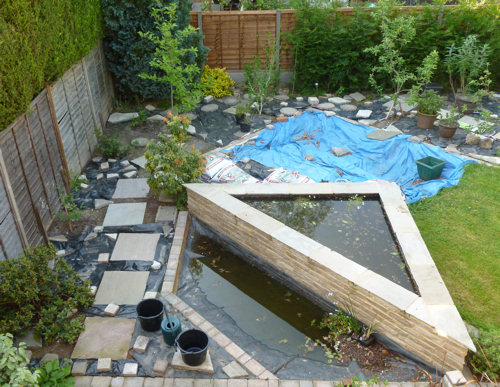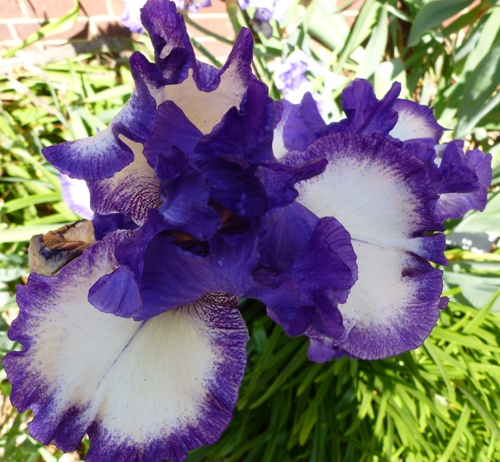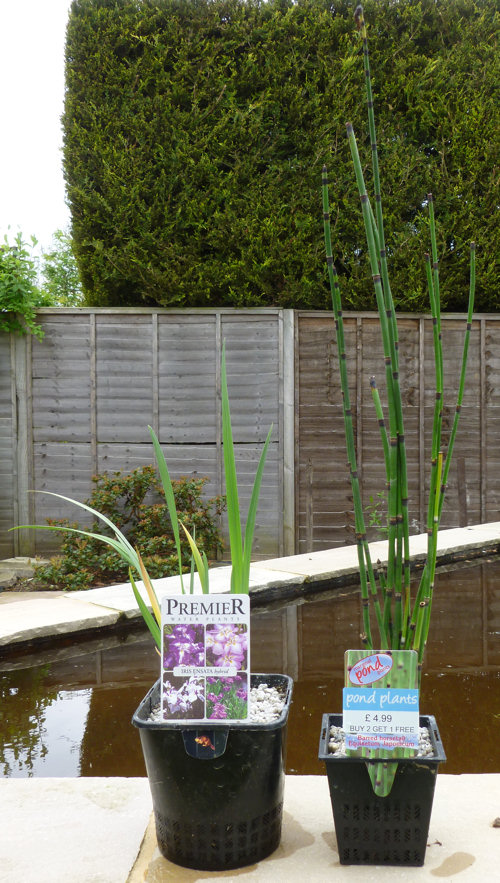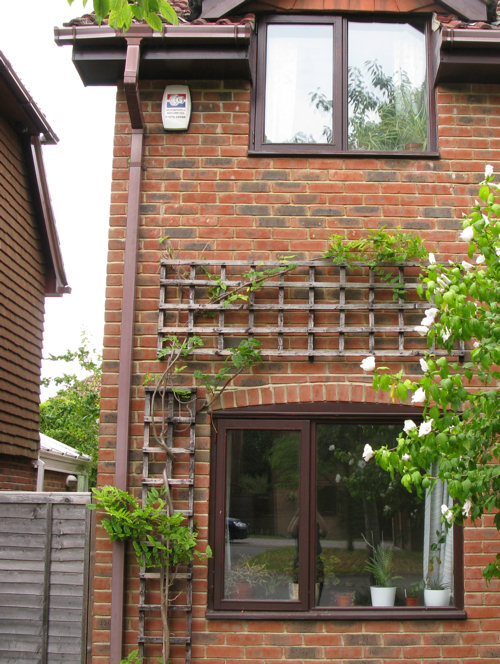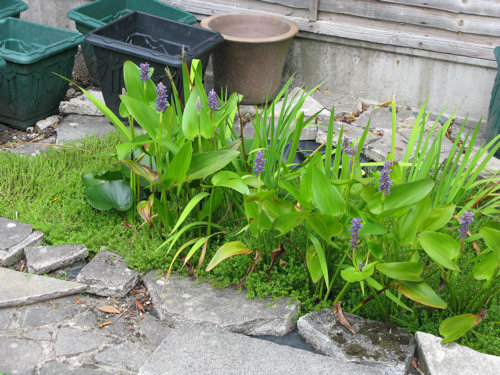I need more May colour!
For the past week we have had wall-to-wall sunshine and it’s been unusually warm. I have had to water my pots and my newly planted shrubs and trees. Everything is growing very fast and is very green. Except for the camellia, but it’s looking less yellow than it did a few months ago. And the evergreen Euonymus, which is meant to look yellow.
However, I can’t help but notice that there’s not much of interest to look at in May. The apple blossom is over, and the hibiscus is several months away from flowering. I will be planting the pelargoniums soon, but I need some May colour. To be fair, the rhododendron that I planted last month, in the far left corner, will probably be flowering at this time when it’s a bit older. It has buds, but I think it’s going to flower later than normal because it’s still very young.
I have been thinking of getting a ceanothus, and this gives me some justification. I would also like a lilac, but I don’t think I have room, and I need some more evergreens so it doesn’t look so bare in winter. Maybe I can put a lilac in the front garden.
As my own garden is so dull, here are some plants that I photographed at Wisley on Friday.
Progress is happening with the ponds. The plants that I bought only ten days ago have grown incredibly quickly. You can see the Ranunculus aquatlilis doing white flowers in the raised pond. I potted the Ranunculus into bigger baskets last Thursday because its roots were coming out of the baskets they were in – only a week after I bought them! I have bought some more aquatic compost and some small pebbles to put on top of the planting baskets, and I am planning to pot the rest into bigger baskets tomorrow.
I have painted 12 concrete bricks that I bought from B&Q with black Blagdon pond paint. The paint has produced a nice effect and I have to wait another six days before I can put them in the pond. However, I may wait longer, and give them a coat of V8 Pondseal because I don’t think the Blagdon pond paint gives a very tough finish and the paint may rub off too easily.
If the hot weather continues, I will have emptied the shallow pond completely by the end of the week, using the water for my apple trees and shrubs, and then I will be able to make another attempt at repairing the pond and making the join between the pond liner and the render watertight.
